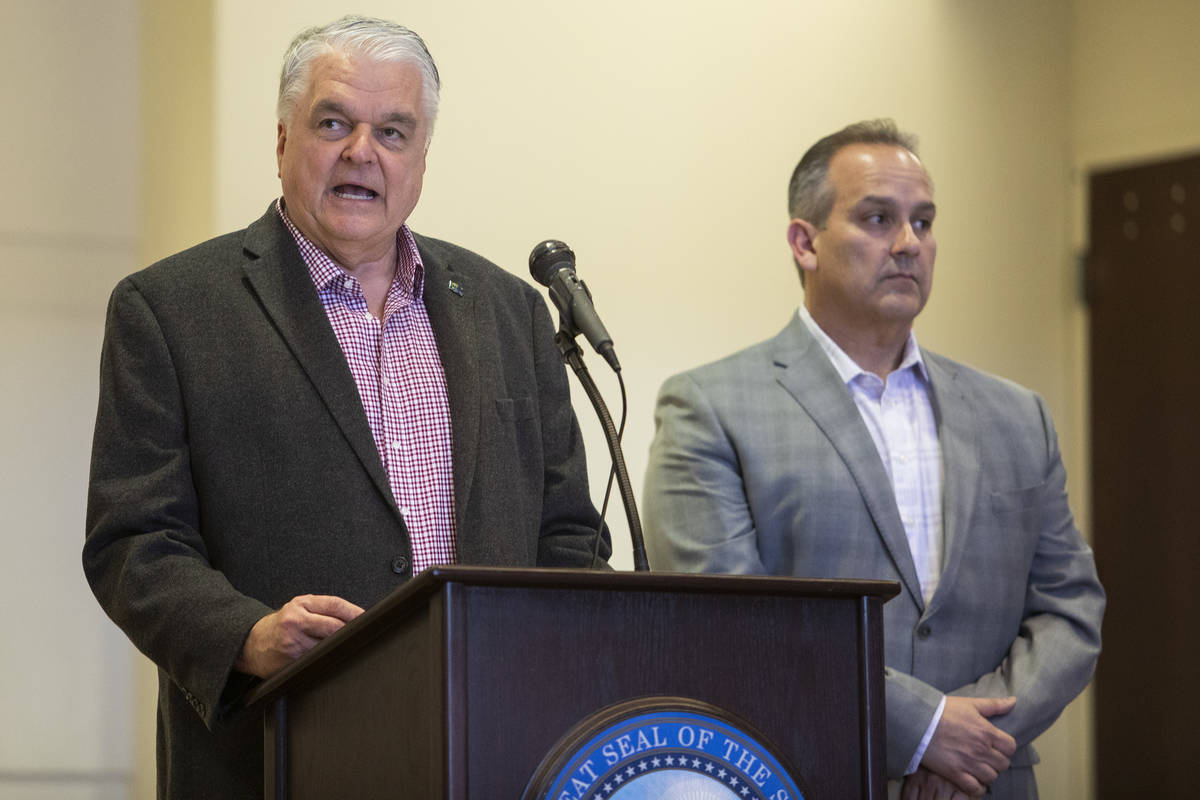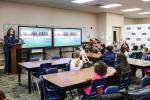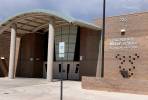CCSD’s distance learning effort strays from state edict
This story was updated after publication.
The Clark County School District apparently is out of compliance with a Nevada Department of Education directive to track contacts with students to maintain at-home learning during the school shutdown.
The issue might be a factor in what CCSD families are describing as wild disparities in how at-home learning is being handled by the district and individual schools.
Responding to a request from the Review-Journal on Monday, staff at the district’s communications department said that CCSD teachers have made 650,000 contacts with students since distance learning began on March 23. They did not respond to repeated requests for additional information on the number of individual students who have been contacted and how many have not. Nor did they respond when asked how the district is tracking that information.
The Washoe County School District and other large public school districts around the U.S. have reported on the percentage of students who have been contacted during school closures.
Since Gov. Steve Sisolak closed state schools on March 15, districts have had leeway to develop their own distance learning plans under the main guiding principle from the Department of Education that they must contact each student at least once per week and maintain a record of those contacts. The directive from state schools Superintendent Jhone Ebert states that “each school must determine a method for tracking contact with students.”
But Education Department spokesman Greg Bortolin said a tracking system that only counts the total number of contacts does not comply with Ebert’s directive.
“They need to know which students have not been reached,” he said. “Students who have not been reached for an entire week should be marked absent.”
Some policies decided locally
What is taught and whether it’s graded are local decisions, Department of Education representatives said Tuesday.
CCSD proceeded with its distance learning plan after missing a deadline to submit one to the state on March 23, asking teachers to start contacting students to discuss both online and hard-copy learning opportunities.
Now, with two weeks of distance learning in the books, many CCSD families say the district’s policy is not working. Some say they haven’t heard from teachers at all. Others say they’re overwhelmed by repeated emails and phone calls from teachers and the central office, as well as shifting guidance on what is expected of their students.
Andrea Auffrey Aparo said that on top of her full-time job as a nurse, she has not only had to help her student with his schoolwork but contact teachers to receive it.
“If I, as a parent, don’t stay on top of the teachers, emailing myself, they wouldn’t be sending work,” she said, adding that the educators are responsive when she reaches out. “I’m always emailing one teacher or another, just trying to get him work to be able to graduate.
In communicating its distance learning plans, CCSD has maintained that the work given out during school closures is not mandatory and will not count toward grades.
But a new district directive for principals to reopen Quarter 3 grades — which ended on March 6 — has caused confusion among parents, as some schools are allowing students to redo any assignments from that time while others are applying the policy to missing work only. The district did not respond to a request for clarification.
Teachers have also separately reported that they’ve been instructed not to cover new material during closures.
Rebecca Dirks Garcia, a CCSD parent and president of the Nevada Parent Teacher Association, said that part of the variability among schools lies in the district reorganization rolled out by Assembly Bill 469, which gave principals latitude over budgets and operations, down to whether a school uses Google Classroom or not.
“This means School A may choose to go 1:1 on Chromebooks and online learning systems like ReadingPlus or Freckle, and School B uses funds for (tutors) and doesn’t purchase any tech or programs,” she said. “Many districts are having an easier transition across the country when all schools and students are using at least mostly the same tools. We don’t have that.”
Parents say they’re seeing the effects of the uneven policies in Clark County among their children, particularly among siblings in different schools or even in different grades.
A range of experiences
Jamie Weaver Rauch said that while her fifth-grade student is receiving an ideal amount of work, her second-grader hasn’t received much direction other than a few Google Documents.
“I worry for my daughter as she already was struggling with a few things that we are now trying to get better at,” she said. “It’s a shame.”
On the other end of the spectrum, some parents say they’ve been inundated with phone calls, robocalls, notifications and emails from teachers trying to establish two-way communication to the point that their kids feel overwhelmed.
Cassie Isaac said her three children are in regular contact with their classes but are experiencing frustrations with completing their work.
Her third-grader meets with his class every morning, she said, but struggles to type his answers and writing assignments.
“This is a first for them to work on the computer at home,” she said. “We limit screen time at home.”
Computer access and fluency have been a chief concern at CCSD as the district seeks to get 120,000 more Chromebooks to hand out to students. When asked for the number of Chromebooks that have been handed out to students, district representatives said the number would not be available until after spring break, when another round of computers is handed out.
Still other parents say distance learning has been a boon, either because found they’ve found a sweet spot in receiving work from teachers or have struck out to learn on their own.
Amber Johnson said both her elementary-age students have had overwhelmingly positive online learning experiences, including listening to Audible stories and doing Google hangouts with their classes.
“I feel like both of the elementary school teachers have spent so much time and effort building an at home curriculum to keep them learning,” she said.
What’s happening elsewhere?
In creating distance learning plans, other school districts around the country have tried varying approaches to ensure that learning continues but that students aren’t penalized for lost classroom time.
In Chicago’s public schools, for example, teachers will still grade work, but the assignments won’t count if they would lower a student’s overall grade.
The New York Department of Education states that remote assignments will carry the same weight as in-person assignments but that absences due to COVID-19 will not be considered in final grades.
Online attendance has been a concern at school districts large and small across the country.
Los Angeles Unified reported initially that the district couldn’t reach some 15,000 high school students, but the number had dropped to 5,000 as of Monday.
The district has not provided those numbers for elementary and middle school students.
The Washoe County School District reported reaching approximately 90 percent of its 64,000 students in the first three days of its distance learning program last week.
District spokesperson Victoria Campbell said the district is focusing on contacting the remaining 10 percent of students. The district also aims to be in daily contact with its students, she said.
Editor’s note: After publication of this article, CCSD spokeswoman Melinda Malone provided these numbers of Review-Journal: “257,486 pupils have been in contact with educators from Monday, March 23, 2020, through Sunday, March 29, 2020. 277,486 pupils engaged in distance education through electronic means and through paper correspondence from Monday, March 23, 2020, through Sunday, March 29, 2020.”
Contact Aleksandra Appleton at 702-383-0218 or aappleton @reviewjournal.com. Follow @aleksappleton on Twitter.

















































